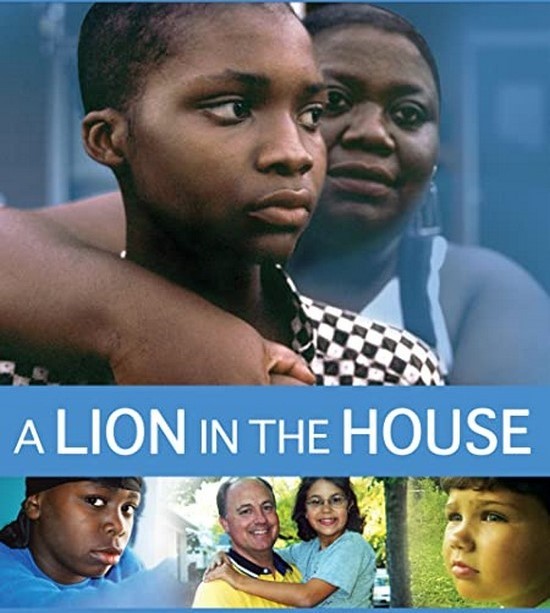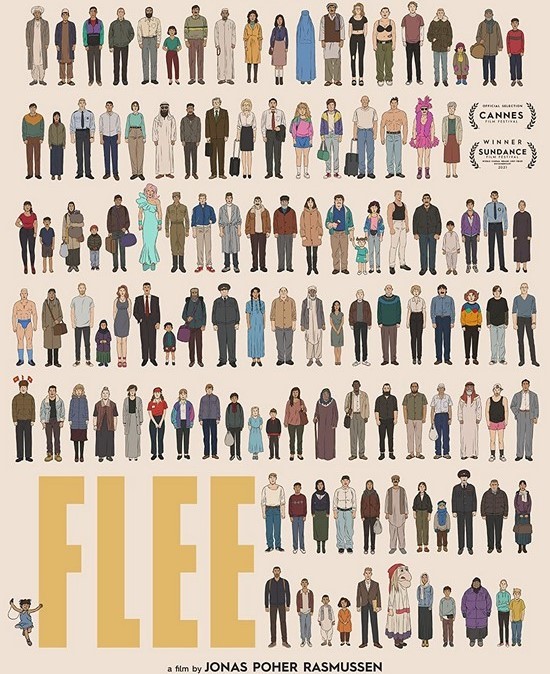The proliferation of documentaries on streaming
services makes it difficult to choose what to watch. Here are three nonfiction
films that will reward your time.
اضافة اعلان
‘A Lion in the House’
(2006)Stream it on Netflix.
 (Photos: IMDB)
(Photos: IMDB)
When documentarian Julia Reichert (“American Factory”) died
this month, her obituary in The New York Times called “A Lion in the House” her
most personal film. Directed with her husband and filmmaking partner, Steven
Bognar, the documentary began when, according to Bognar’s opening narration, they
were invited by the head oncologist at Cincinnati Children’s Hospital to make a
documentary about what a family goes through when a child has cancer. In the
voice-over, Reichert notes that their own daughter had just finished treatment
for cancer. After the movie was finished, Reichert received a diagnosis of
non-Hodgkin lymphoma.
Made over six years, the documentary pivots around 5A, the
cancer unit at the pediatric hospital. For nearly four hours of screen time, it
immerses viewers in the lives of five patients who received their cancer
diagnoses as children, and in the lives of their families and the many doctors,
nurses, and social workers charged with their care. While a
film such as
Frederick Wiseman’s extraordinary “Near Death” (1989) approached the subject of
mortality with intimacy but a characteristic detachment, “A Lion in the House”
is a case in which the filmmakers have a clear emotional investment in the
material. Few documentaries look so unflinchingly yet so compassionately at the
cruelty of relentless medical ordeals.
The patients vary in their circumstances and prognoses. They
include Tim, a teenager with Hodgkin lymphoma, who initially resists his
doctors’ efforts to have him gain weight and whose illness has severely limited
his social life and his attendance at school. Alex, who has leukemia, is
introduced when she is 7 and her cancer is in remission, but it returns, and
Reichert and Bognar follow her and her at-times disagreeing parents through a
succession of tough decisions on treatment, in which the answers about what’s
best for Alex and what might prolong her survival are not always clear. Justin,
at 19, has already been fighting leukemia for 10 years when the movie begins;
over the course of the film, he reaches what appears to be the end, with at
least one doctor pushing for a serious discussion about his death. But when
Justin somehow survives after 24 hours of having what another doctor calls
“blood pressures incompatible with life,” the parents’ decision on whether to
press on for their professed fighter of a son only grows thornier.
Every moment in the movie is the stuff of life and death,
and while “A Lion in the House” is almost always tough to watch, it is also
impossible to shake.
‘Did You Wonder Who Fired the Gun?’ (2018)Stream it on Fandor, Kanopy, Ovid, Projectr, and Topic. Rent
it on Amazon and Apple TV.

The protests following the acquittal of
George Zimmerman in
the killing of Trayvon Martin prompted experimental filmmaker Travis Wilkerson
to investigate a troubling family story. He had been told S.E. Branch, his
great-grandfather, who ran a grocery store in Dothan, Alabama, and was, from
what we hear of him, a virulent racist, had killed a Black man, Bill Spann, in
the 1940s and gotten away with it.
Wilkerson’s mother quickly sends him a newspaper item from
1946; it says that there was a charge against Branch for first-degree murder in
Spann’s killing. But that charge mysteriously disappeared, as tended to happen
when white men committed violence against Black people in the Deep South, and
Branch went on to live for decades. Wilkerson pores images of him in 8mm home
movies, one of which is labeled with the month of the murder. He even has a
photo of the two of them together, the year Wilkerson was born and Branch died.
As for Spann, there are few traces left of him or any descendants. “Did You
Wonder Who Fired the Gun?” is partly the
filmmaker’s effort to atone for that
absence. To paraphrase his voice-over, this is the story of a murder victim
buried in an unmarked grave — and of the killer’s great-grandson, who is
filming that grave. “That’s a pretty precise expression of racism, no matter
how you cut it,” Wilkerson narrates.
The scope of this chilling essay film is much broader than
Wilkerson’s family history and his sleuthing. Wilkerson meets with Edward
Vaughn, a civil rights activist from the area who remembers a boycott of
Branch’s grocery store after the killing and the woeful conditions at the
hospital where Spann had been taken. Wilkerson weaves in an account of the rape
of Recy Taylor — an assault that took place nearby in 1944 — and the work that
Rosa Parks, roughly a decade before the Montgomery Bus Boycott, did to
investigate it.
‘Flee’ (2021)Stream it on Hulu.

“Flee,” from director Jonas Poher Rasmussen, received Oscar
nominations for both animated feature and documentary — an unusual combination.
But animation really is the ideal form for this nonfiction account of one
refugee’s flight from Afghanistan in the early 1990s. One of the themes that
emerges is that living clandestinely requires continually being able to adapt
one’s identity. In that way, the abstraction of animation — its distance from
reality — reflects the material.
The central figure of “Flee” is called Amin in the film (at
the start, the
documentary notes that certain names and locations have been
altered to protect the subjects). He knew Rasmussen from high school, but there
is a lot that Rasmussen did not know about him. As Amin’s interlocutor
throughout the feature, the director, interviewing him in Copenhagen, gets him
to divulge things that he has largely kept to himself, for understandable
reasons. Amin gives an account of a journey from Afghanistan that was anything
but straightforward: He speaks of arriving in Moscow the year after the fall of
the Soviet Union and an arduous effort to escape that eventually returned him
to Russia, for a time.
You might be tempted to see Amin’s resilience as inspiring,
but in “Flee,” he also considers the lingering effects his experiences on the
run have had on his personality. “When you flee as a child, it takes time to
learn to trust people,” he says. “You’re constantly on your guard.” The sense
given is that his defensive mode may have even caused friction in his present
relationship. The film also deals with Amin’s coming to terms with being gay —
he says there wasn’t even a word for it in
Afghanistan — and his fears of his
family’s reaction. But that outpouring — more of a blurting-out — makes for one
of the film’s most unexpected and
heartwarming sequences.
Read more Entertainment
Jordan News








